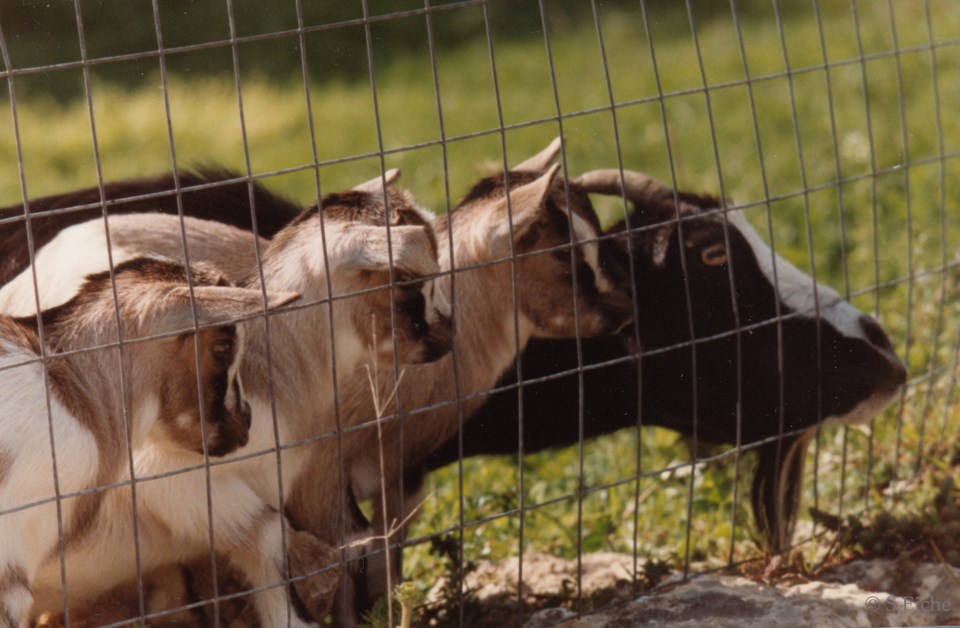Goats have not fared well in the popular imagination. For the heading of this column, I’ve used the idiom “to get one’s goat” — if a person says you did something that got their goat, it means you’ve annoyed them. The expression caught on in the U.S. at the beginning of the twentieth century. Its origins are unknown, though plenty of more or less credible explanations have been put forward.
But the goat’s connection to much that’s negative in human behaviour goes way back, to antiquity if not beyond. Legend has it that the devil created the goat, and in some representations of the devil he assumes goat-like features. The expression “to separate the sheep from the goats,” which is derived from the Bible (Matthew, xxv:32), means to separate the good from the evil. On Yom Kippur, the Jewish Day of Atonement, two goats were brought to the high priest’s altar — one was sacrificed, the other, loaded with the sins of the people, was allowed to escape (source of our word scapegoat).
It’s believed that goats were first domesticated about 10,000 years ago in the Near East, though they’ve been in North America for only a few centuries. Early European settlers brought over Spanish, Austrian and Swiss breeds. They were considered prized possessions — a 1630 census of Jamestown, Virginia lists goats as one of the most valuable assets.
In fact, there’s plenty of evidence to show that goats have been unfairly maligned far too often. We can’t deny that they’ve long provided us with nourishing gifts, such as milk, cheese and yogurt. Goats have even been credited with the discovery of coffee. According to an Ethiopian legend, back in the ninth century, a goat herder noticed that after his goats had eaten certain berries, they were charged with so much energy they couldn’t fall asleep at night. And new research is leading to a re-evaluation of the nature of the human-goat relationship.
Goats are herbivores, meaning they eat only plants. They’re not overly fussy and chomp away at dried, thorny, even poisonous plants. For centuries, humans have taken advantage of the goats’ uncomplicated appetite to get rid of unwanted vegetation. More recently goats have demonstrated their usefulness in combatting one of the great scourges of our time: wildfires. They’re being deployed in various areas around Europe, especially in Spain, Portugal and France. They’re even helping out in a suburb of Dublin, Ireland.
In North America in the summer of 2019 they were “munching away at summer-dried, fire-ready grasses in Oregon, Washington, Colorado, Idaho, Montana, Utah, Nevada, and across California." As goat herder Lani Malmberg says, “There is no machine out there that can do what a goat can do."
The work of goats is being hailed as the new, environmentally friendly way to clear land without the use of pesticides (it’s led to the invention of the term goatscaping). Moreover, goats don’t run on fossil fuels or batteries. They run on what they chew. Already in 2008, goats came out victorious (and well-fed) in the battle against Himalayan blackberries growing near the Skagit River. Kamloops brought in goats in 2012 to deal with a weed infestation in Kenna Cartwright Park. Earlier this year the CBC reported on a project in Quesnel, in central B.C., to hire 132 goats to eat the invasive plants, in order to reduce what could become fuel for wildfires. “The wonderful thing about the goats is they merrily munch away and then they fertilize as they go.”
Patches of pesky vegetation are growing on some of our city’s lands, but so far there’s been resistance to bringing in goats to tackle the invaders. Richmond, an environmentally friendly method of dealing with the problem has been tested by countries around the world. It’s been implemented by cities in our own province. What are you waiting for?
Sabine Eiche is a local writer and art historian with a PhD from Princeton University. She is passionately involved in preserving the environment and protecting nature. Her columns deal with a broad range of topics and often include the history (etymology) of words in order to shed extra light on the subject.



